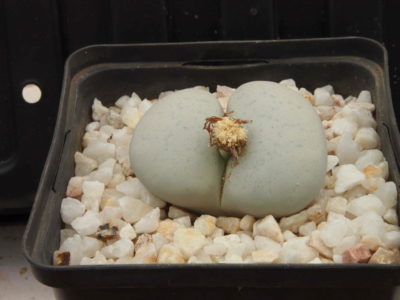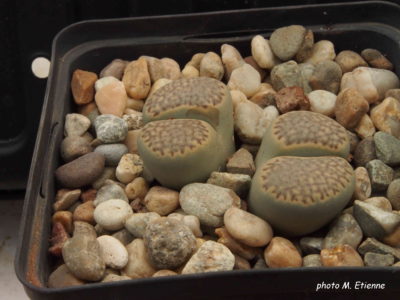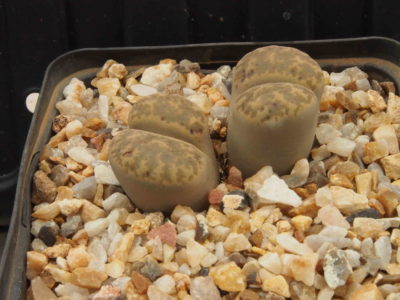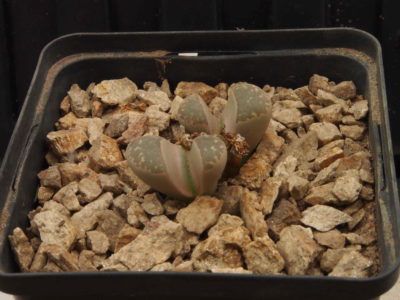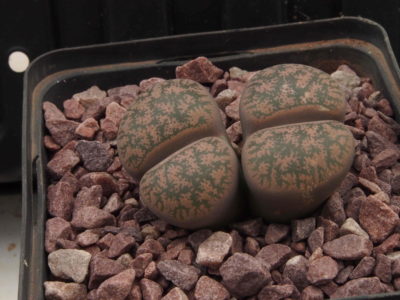Pot :
Lithops have a taproot and like to be “cramped”, so it’s best to use deep and small pots. My Lithops spend their first three years in 5x5x6 cm round pots and then stay in square pots of 7x7x8 cm until they divide, they are then permanently transplanted in square pots of 9x9x10 cm where some live for more 15 years.
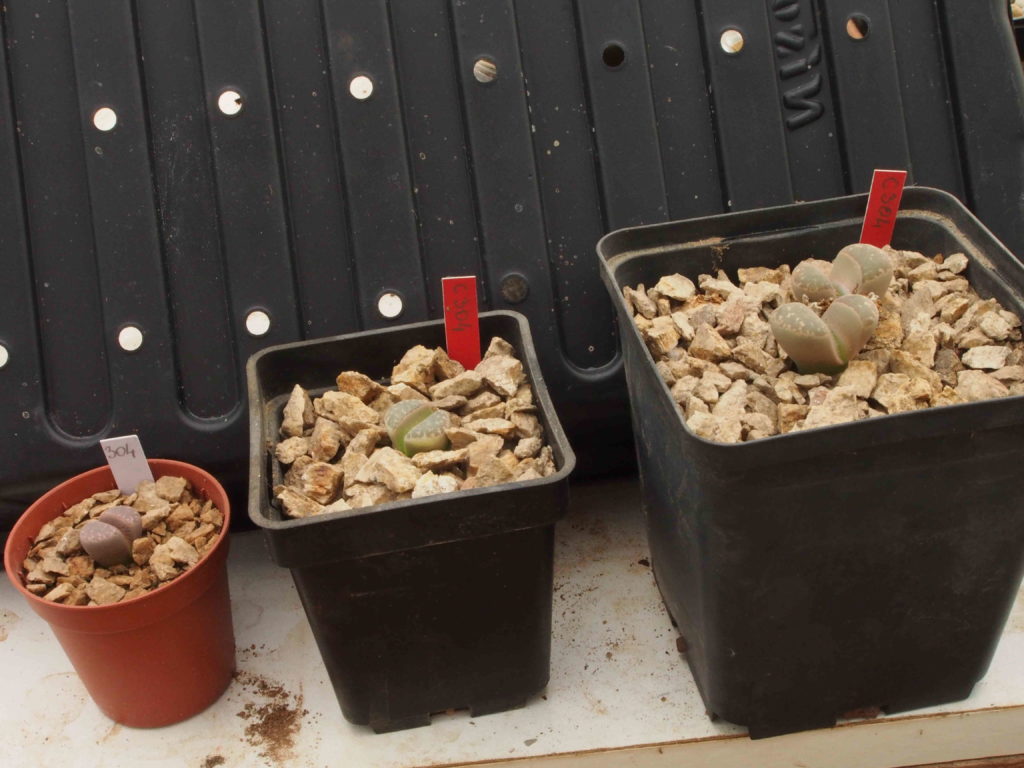
Substratum :
It must be very draining, because Lithops are very sensitive to fungal diseases (fungi).
If you opt for a standard mix (the same for all your Lithops), it can consist of one third of coarse mineral elements (gravel, pozzolana, coarse sand), a third of aerated inert elements (perlite, vermiculite, pumice stone) and a third of garden soil.
If you opt for a specific mixture (adapted to each species), the ideal is to have 5 to 7 generic substrates mixing three granulometries (earth + sand + gravel): quartzite, gneiss, sandstone, granite and limestone (more possibly shale and dolomite). There are three other very specific substrates that can be replaced by pozzolan for basalt, quartzite for flint and granite for pegmatite. All these substrates are easy to find in France, just have a look at the geological map of your region. For example in the PACA region, there is sandstone, gneiss and granite in the Maures or Esterel mountains, and quartzite and limestone in the Alpilles.
Only the roots of the plant should be buried in the substrate, the body of the plant being maintained by 1 cm of gravel (2-5 mm) equivalent to the substrate (quartz, gneiss, sandstone, granite, limestone, shale). I push the difficulty by trying to match the color of the gravel to the color of the species, but that’s mostly for the fun and to copy the mimicry very common between Lithops species and their substrate in their original habitat.
Examples of “mimetic” combinations :
Light:
Lithops share their habitat almost exclusively with pebbles, so they need a lot of light throughout the year. Be careful, however, not to take them out in the sun brutally, they would be burnt irreparably.
Temperature :
Here too a simple rule of thumb: by safety keep all your Lithops frost free and if possible in a dry atmosphere in winter. Nevertheless, it is essential that they get some cold in winter to guarantee the success of the moult and the flowering of the following year.
Although it is advisable to keep them below 40° C in our climate, they can withstand temperatures up to 50° C as long as they are in a sufficiently ventilated atmosphere.
Nutrients:
Professional producers fertilize their Lithops once or twice a year with a low nitrogen fertilizer. Personally, I never give a drop of fertilizer to my Lithops.
